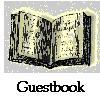







 |
 |
 |
 |
 |
 |
 |
 |
||
|
||||||||||||||||||
|
Games: |
||||||||||||||||||
|
Publisher: Corsair Publishing. Designers: Seth Johnson and Brian Schomburg. You draw your character (nominally a superhero or supervillain), and the other players rate them on various characteristics, such as Muscle and Gear. Then the characters fight each other (if they're on opposite sides of the law) or fight NPCs (if the PCs are on the same side). Each characteristic has a score from 1 to 10, and your basic roll is 2d6 + your characteristic vs. a target number or an opposed roll. The game is humorous. The point of fighting the enemy is mainly to look good in front of the media so that your popularity goes up and you get commercial endorsements. (Your characteristics go up, too.) There are "advanced" rules, too, for skills and special traits. Even with the advanced rules the game is very simple. I like Sketch because it made me say "Wow." It's a fresh, fun concept. It's silly, but it's genuine. It's not a joke; it's a funny game. In fact, the designers put together a chart giving you an example task for various target numbers for each characteristic. Serious simulationist RPGs often don't go to the work of providing you such useful information. That chart demonstrates that the designers are willing to do smart work to make their game easier to play. I wish more RPG designers were willing to do the same. Sketch is the opposite of Everway (which means the games must be similar, like love and hate). In the same way that the universe of Everway had to support the key concept that you invent your character based on images, the setting of Sketch supports the key concept that you draw your character. The setting practically has to be weird SF/supers, so that no matter what you draw, you can play it. Sketch has to be light-hearted, so if you draw an animate potted plant you don't blow the atmosphere. With both games, the rules have to be light and flexible. I've heard that some folk resist sketching their characters for Over the Edge. Sketch has three features to help players who are uncomfortable with the idea of drawing their characters. First, there are figure templates that you can draw over (like Champions hero templates). Second, there are "Build-a-Character" drawings, pieces of a character (such as muscular arms and weird gadgets) that you can trace onto your sketch. Third, there are well over a hundred sketches of heroes and villains in the book, and I guess you could just trace (or point to) one of them. These illustrations vary from the professional to the amateurish. The amateurish ones carry the sub-text that you don't have to be an artist to sketch your character. To appreciate Sketch, you need to see a copy of the game. It's very visual, and I can't do it justice in text. I played one game of Sketch, player vs. player style. I had picked up a stack of comics from the give-away table at Wizards, so one player created a collage of comic images rather than a drawing. We had fun, but the system isn't really robust enough to make combat engaging on its own. If I were to play again, I'd use the cool random scenario tables and run the game DM & players style. The game made a big impression on my kid, who was six at the time. She still remembers it and asks to play. Sketch was my 2000 Pick of GenCon. —JoT |
||||||||||||||||||